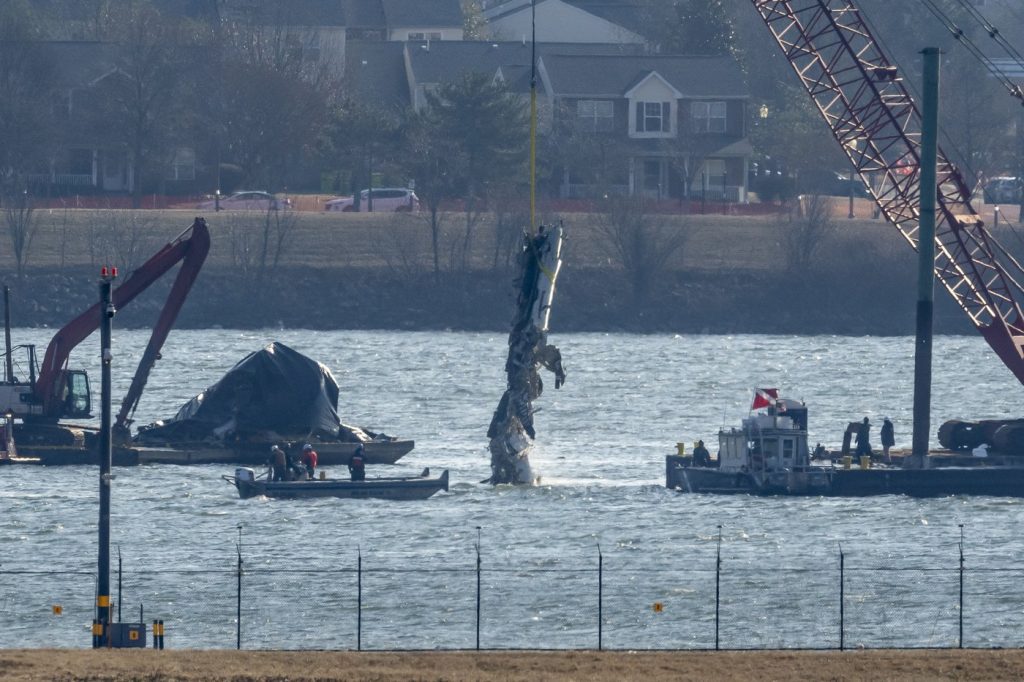More than two weeks following a tragic helicopter and airplane collision over Washington that resulted in the loss of 67 lives, investigators have completed their analysis at the crash site where both aircraft plunged into the Potomac River. This incident marks the deadliest air disaster in the United States since 2001.
On January 29 at approximately 8:15 p.m., American Airlines Flight 5342, carrying 64 individuals, commenced its initial descent into Ronald Reagan National Airport. Meanwhile, an Army Black Hawk helicopter, identified as PAT25 by air traffic control, was navigating south over the river under clear skies. By 8:43 p.m., as the plane was instructed to switch its landing approach, the helicopter's cockpit voice recorder captured conflicting altitude reports, with the pilot claiming an altitude of 300 feet and the instructor citing 400 feet.
As both aircraft converged, the Federal Aviation Administration (FAA) controller communicated the position of the incoming Canadian Regional Jet (CRJ), which was circling at 1,200 feet, and the Black Hawk's pilots confirmed visual contact, requesting permission for visual separation. At 8:47 p.m., just 20 seconds before impact, the controller alerted the Black Hawk crew multiple times regarding their proximity to the CRJ, but the NTSB stated the helicopter’s pilots may not have received that crucial instruction.
Seconds before the collision, an alert indicated "Traffic! Traffic!" to the plane's crew. Despite attempting an evasive maneuver just before impact, both the helicopter and the jet collided violently, resulting in their immediate descent into the Potomac River. Radio communications captured in the moments following the collision reflect chaos, with responders quickly mobilizing to conduct search operations on the water.
The day after the crash, January 30, President Trump confirmed the absence of survivors and expressed uncertainty regarding the causes of the collision. Information began to emerge regarding the victims, leading to emotional tributes from families across social media. By midday, authorities had recovered the bodies of all three soldiers aboard the helicopter.
In subsequent search efforts, responders retrieved various debris, including parts of the aircraft and personal items. Recovery efforts intensified, with over 300 personnel participating in the search on January 31, amid inclement weather conditions. As investigations unfolded, officials noted discrepancies in altitude data between the helicopter and the airliner as well as issues surrounding the operational status of the helicopter’s Automatic Dependent Surveillance-Broadcast (ADS-B) technology.
By February 1, recovery teams had identified two Army soldiers, Staff Sgt. Ryan Austin O'Hara and Chief Warrant Officer 2 Andrew Loyd Eaves. The third victim, Capt. Rebecca M. Lobach, was acknowledged shortly after. As the search continued, investigators hoped the helicopter's black box would clarify altitude discrepancies. Over the following days, salvage crews pulled substantial wreckage from the river, including vital components of both aircraft.
By February 5, memorial services began, reflecting on the lives lost, including a flight attendant known for his connections with others. Plans for tributes, such as a figure skating event in Washington, D.C., were also announced. Authorities confirmed the identification of all victims, with efforts focusing on returning remains to their families.
As salvage operations concluded on February 6, queries were raised regarding why the helicopter's ADS-B technology had been turned off. Investigators and officials remained focused on the impacts of air traffic control protocols and pilot communications leading to the catastrophic event. The exploration of data, eyewitness reports, and the examination of recovered wreckage will be crucial in understanding the collision and preventing future tragedies.










